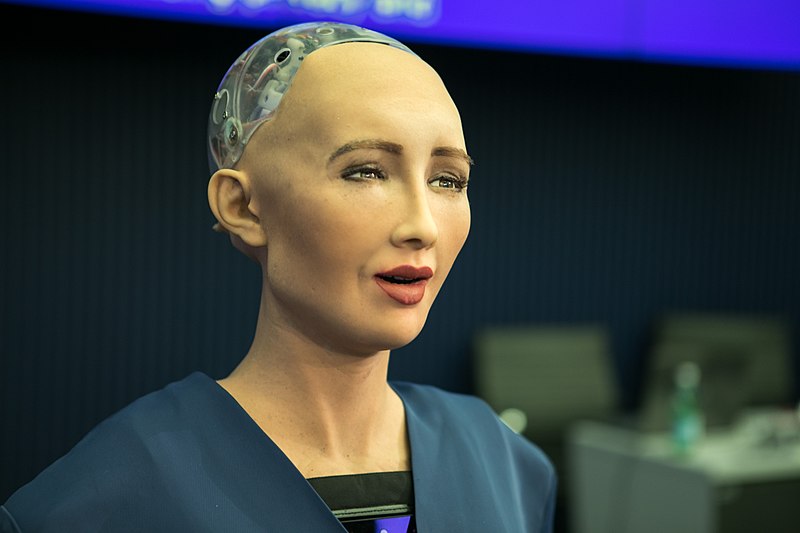Sophia the Robot has always had a good head on her shoulders, and now she has a snazzy pair of legs to match.
Sophia was created by a team lead by David Hanson of Hong Kong-based Hanson Robotics and was officially activated on April 19, 2015. If you happen to forget her birthday, don’t be surprised if she gives you a dirty look—Sophia’s humanoid face uses a combination of advanced artificial intelligence and mechanical skin to mimic real human expressions and conversations.
Originally just a head and torso and modeled after Audrey Hepburn, she was recently fleshed out with a set of functioning legs to help her become ever-so-slightly more human.
So what if she tends to lumber along with baby steps and she’s not anywhere as graceful as her lithe namesake? This leap into a new world isn’t about ambulatory perfection. Her electronic bread-and-butter is still the advanced intelligence that allows her to hold basic conversations on a variety of topics.
While her interactions are still, admittedly, a bit creepy, the underlying proof of concept could be the start of a great friendship between humans and robots.
In 2017, Saudi Arabia granted her legal citizenship, a controversial decision that was meant to signal the Middle Eastern country’s interest in AI learning.
Beyond the Novelty of Machine Learning
The technology that brings Sophia to life isn’t mere novelty. Her AI was created with help from Alphabet Inc., Google’s parent company. The trajectory of her evolution is aimed at very real issues, such as helping socially isolated people, creating a nonjudgmental co-worker in the workplace, and teaching children.
Imagine having your own Sophia to enhance your lifestyle by interacting with the smart devices in your house or taking your dog for a walk. The future is wide open for Sophia, and Hanson Robotics is just as curious as we are to see where she goes—and with those new legs, she may be able to get there on her own.
Sophia’s body, called a DRC-HUBO by the South Korean team that developed it, was intended to help Sophia “walk among us,” as her creators say, and deepen her impressive machine learning skills. Hopefully, she will fare better than Microsoft’s Tay, who was sent to Twitter to learn how to develop conversational intelligence.
Oh, poor Tay. They should have warned you.
After “conversational learning” on the lightly regulated social media platform, the bot began making racist and offensive tweets and was shut down.
Read More: How Microsoft’s AI chatbot ‘Tay’ turned incestuous Nazi accurately reflects our society
Developing a sense of right and wrong is one of AI’s great challenges, but just to be safe, developers might keep Sophia off social media until she learns how to discern good, appropriate conversations from bad, tactless ones.
Sophia’s Next Steps—Pun Slightly Intended
While Sophia is essentially an advanced chatbot with a body, David Hanson hopes she can eventually find her way into “health care, customer service, therapy, and education.” Sophia’s software is advancing daily, making her conversations quicker and more relevant, and it’s even helping her create more accurate facial expressions.
All great technology starts somewhere. Sophia’s creators are quick to point out she is not on the verge of consciousness, though she is one of the most advanced androids in 2018.
While Sophia still has a long way to go before she’s on par with Data from Star Trek: The Next Generation or even Rosie the Robot from The Jetsons, her ability to function in society may be right around the corner.












